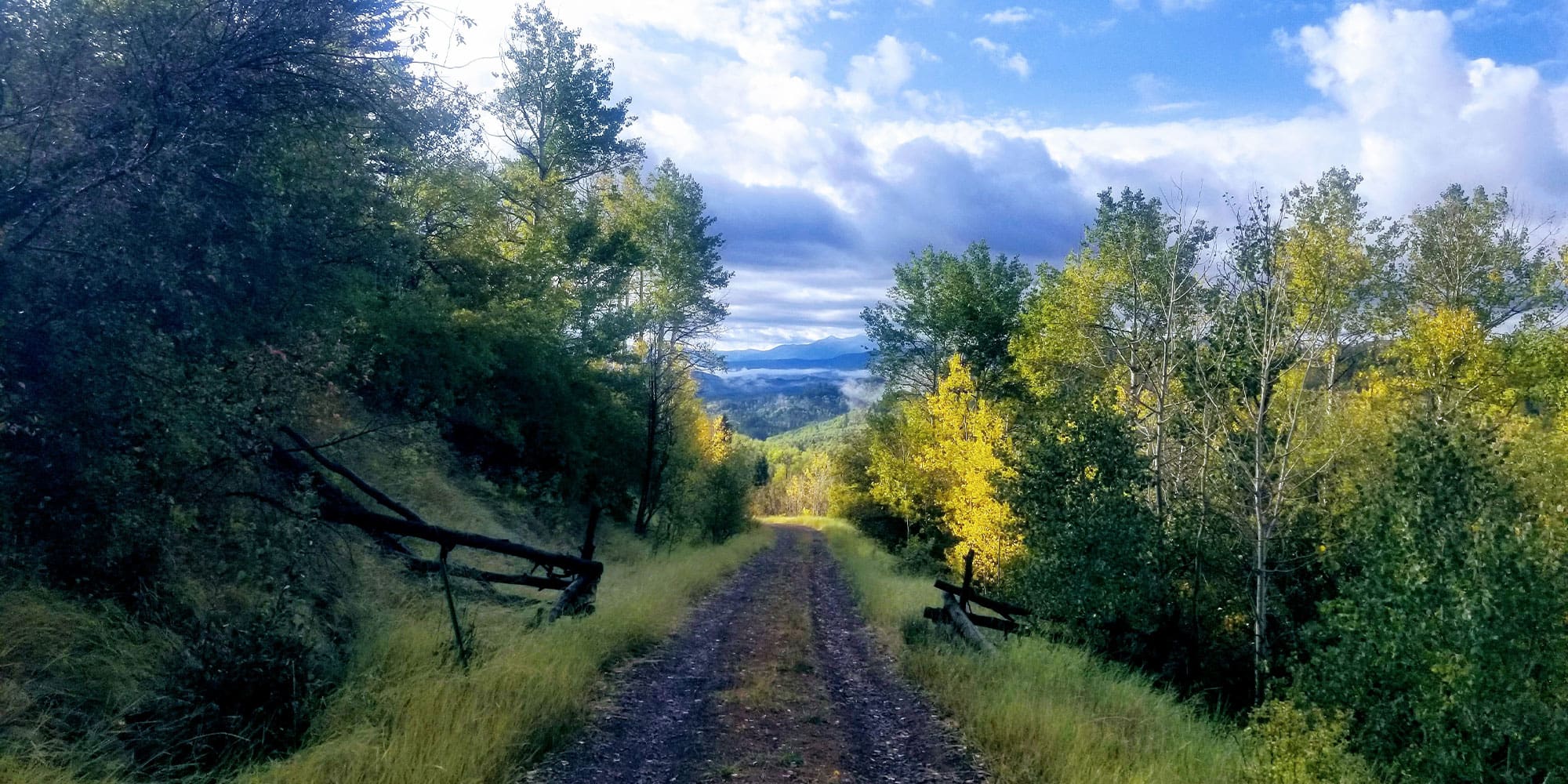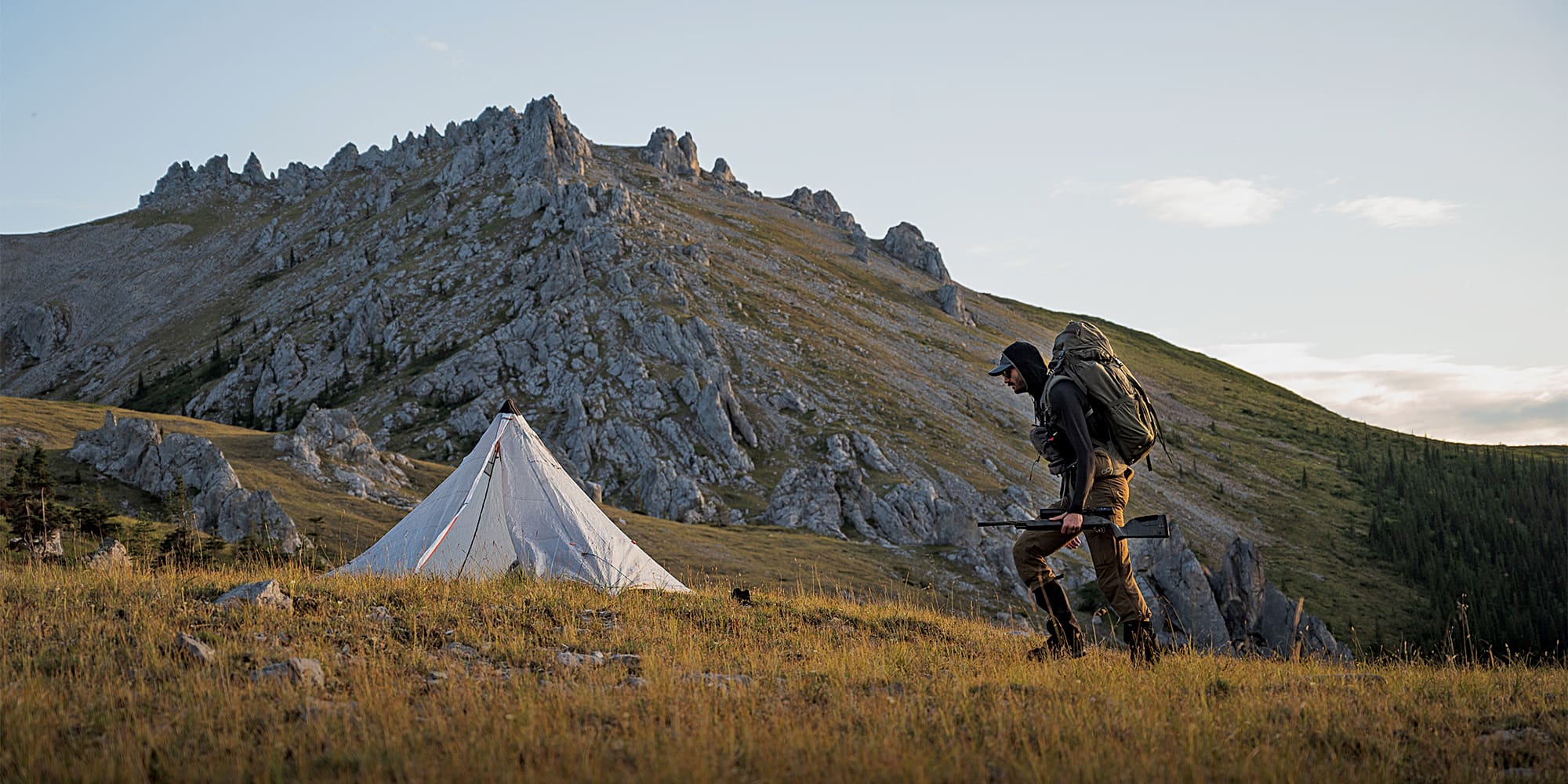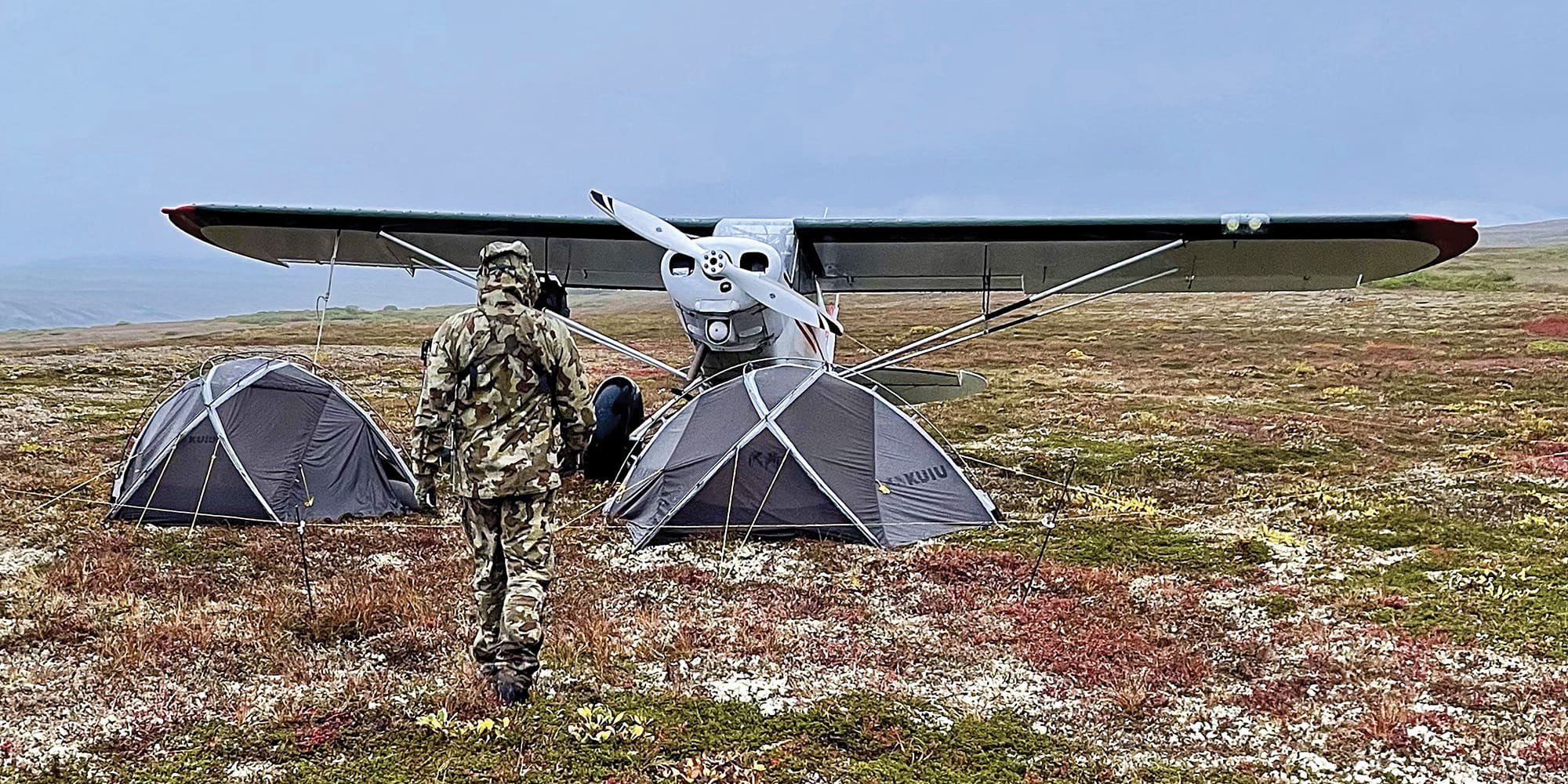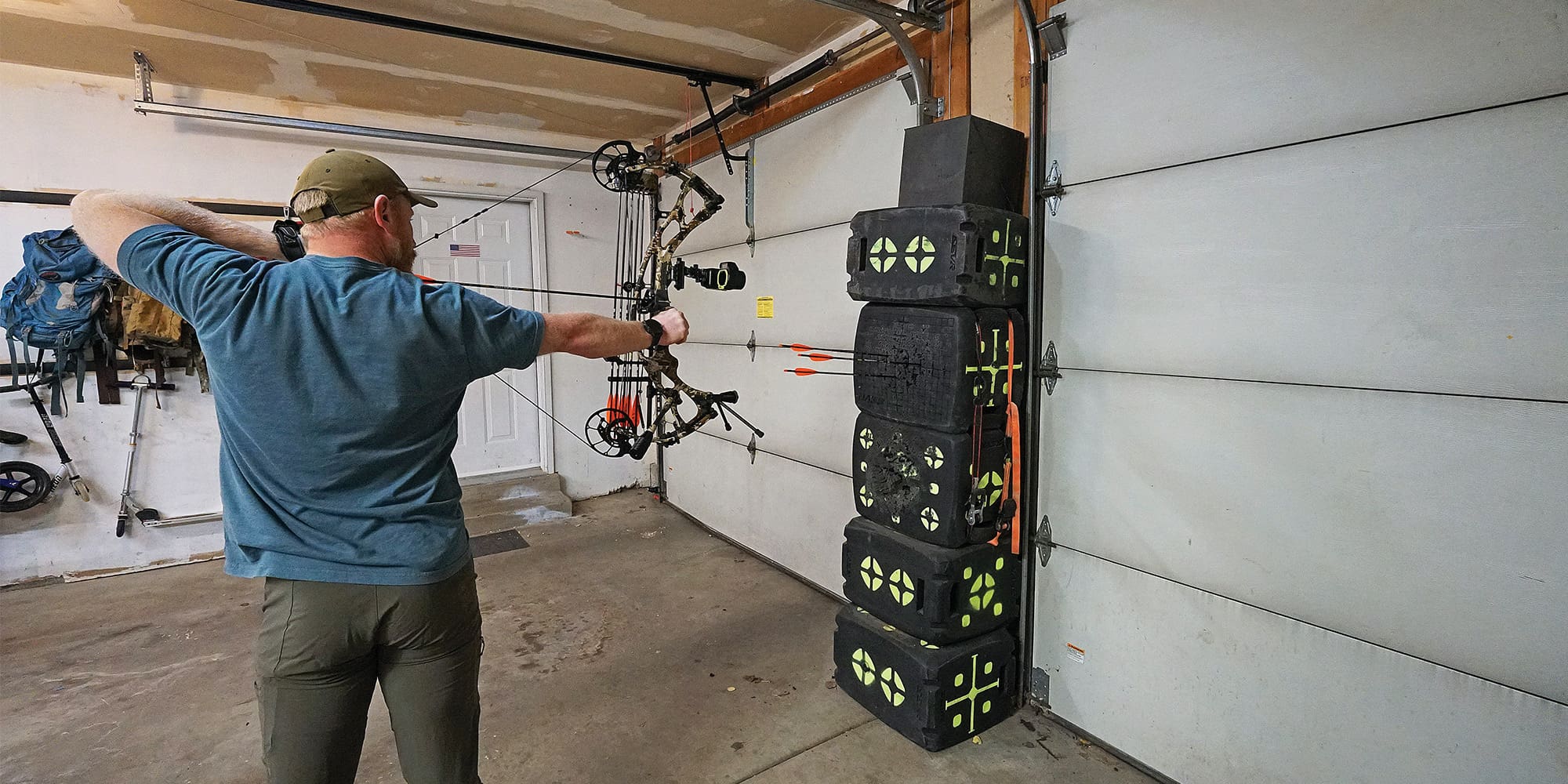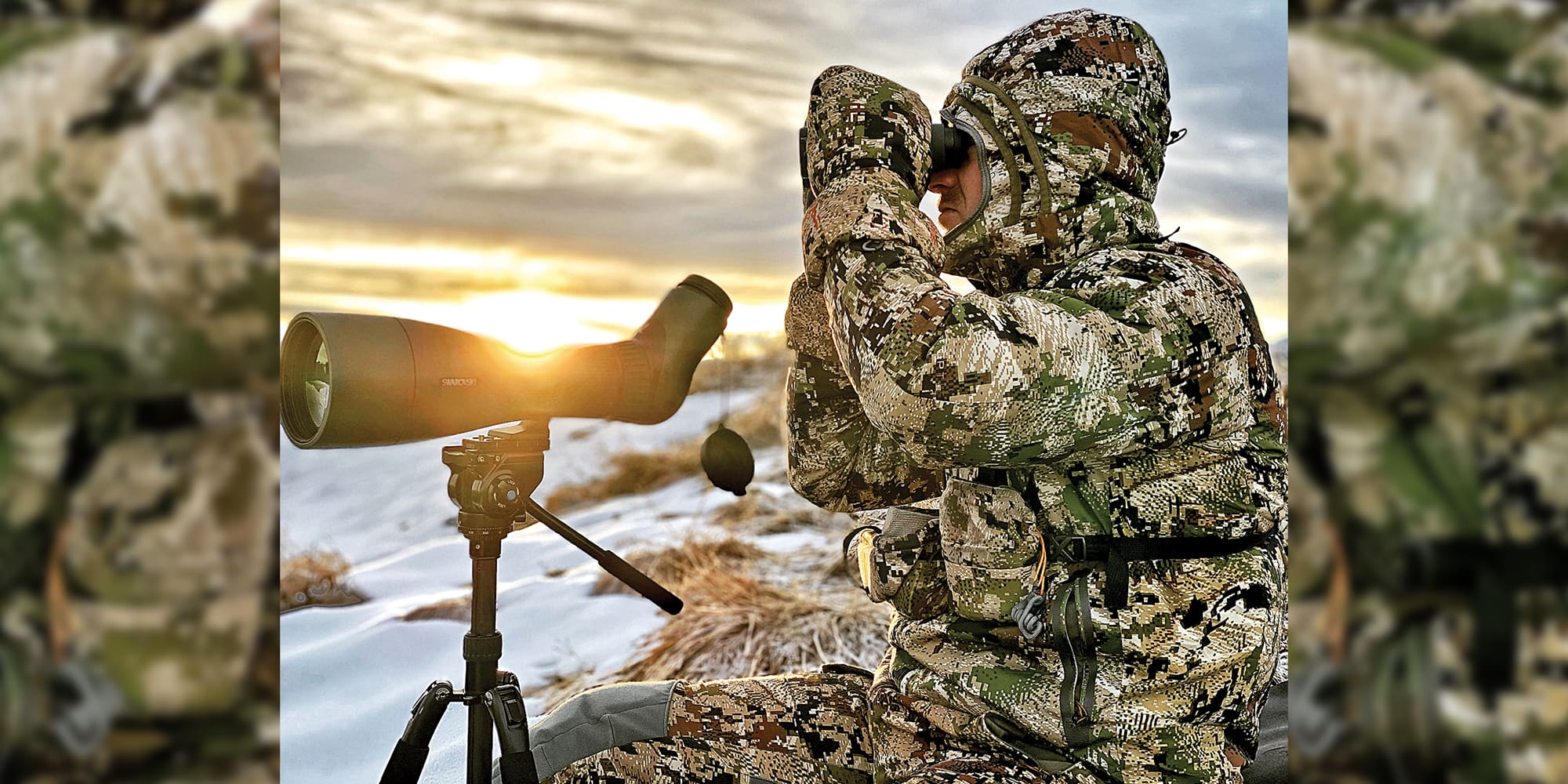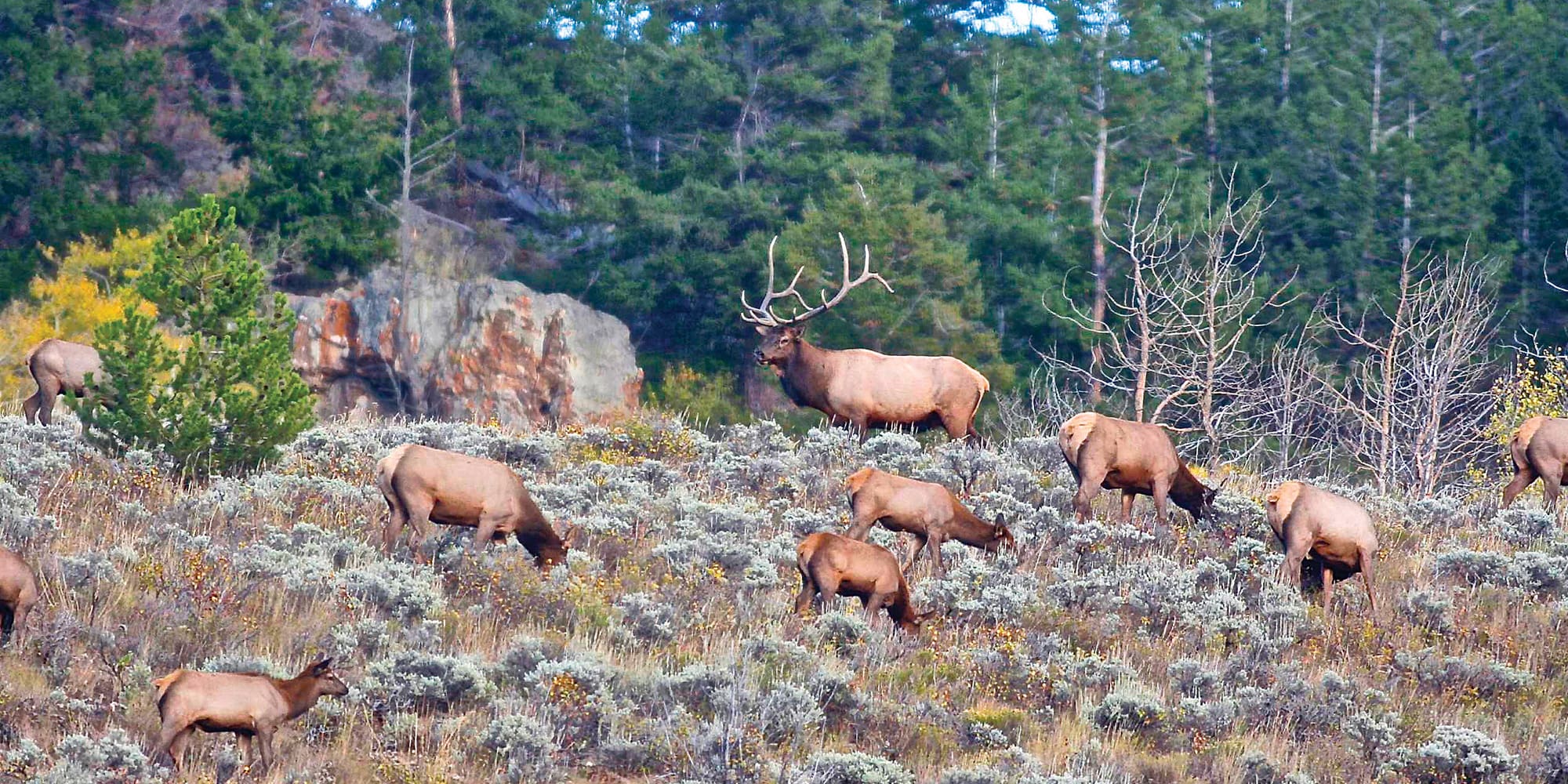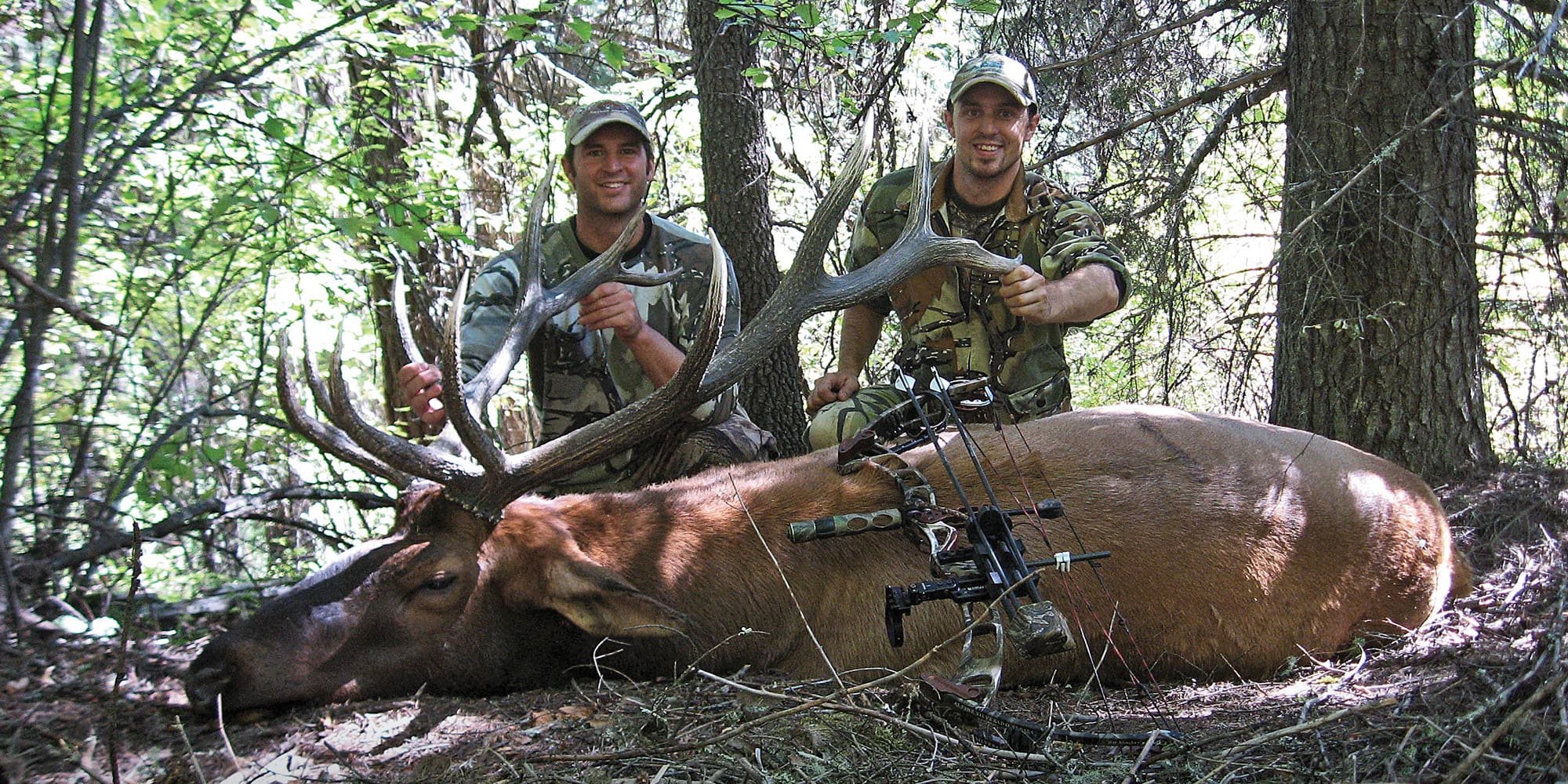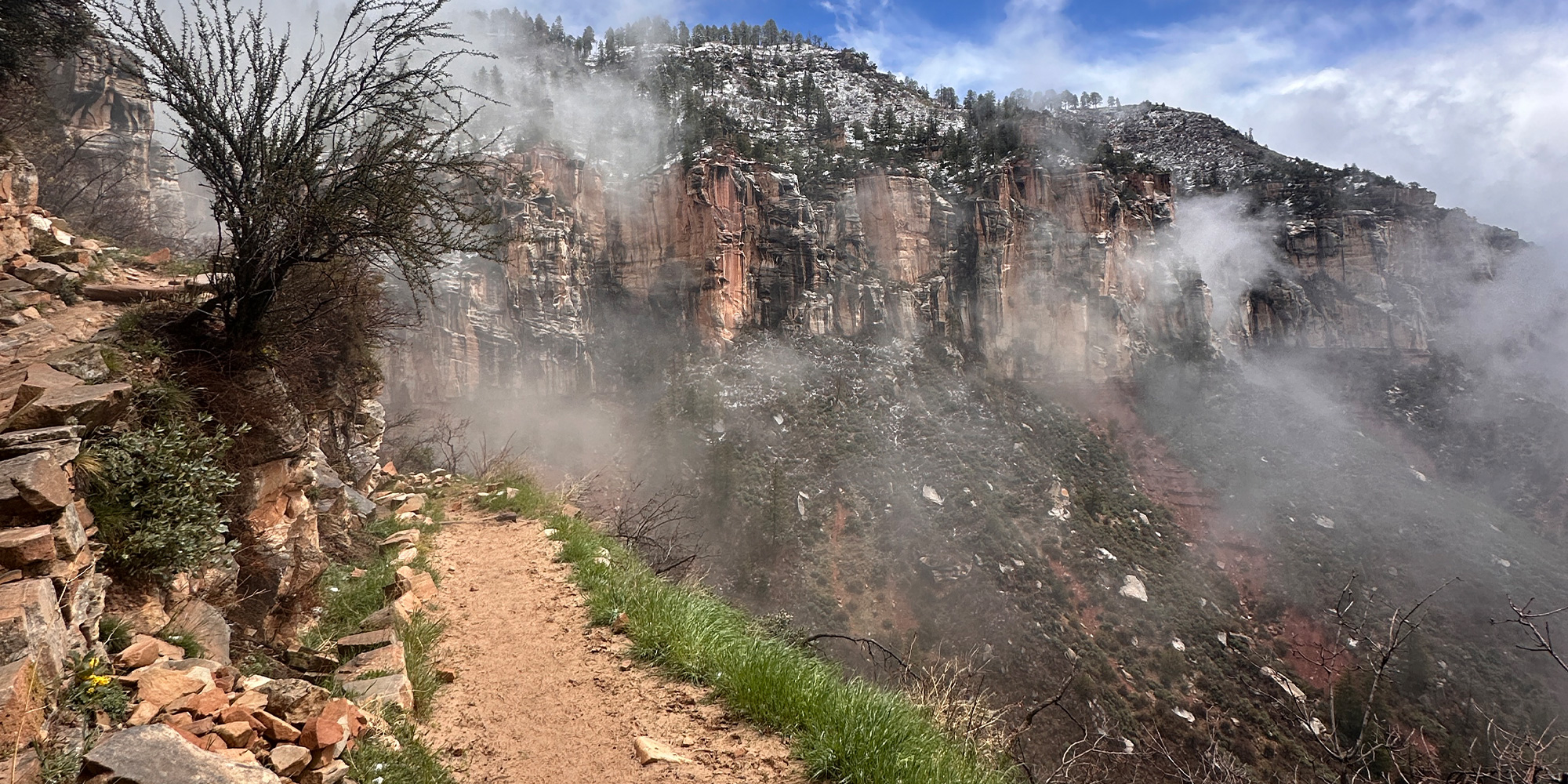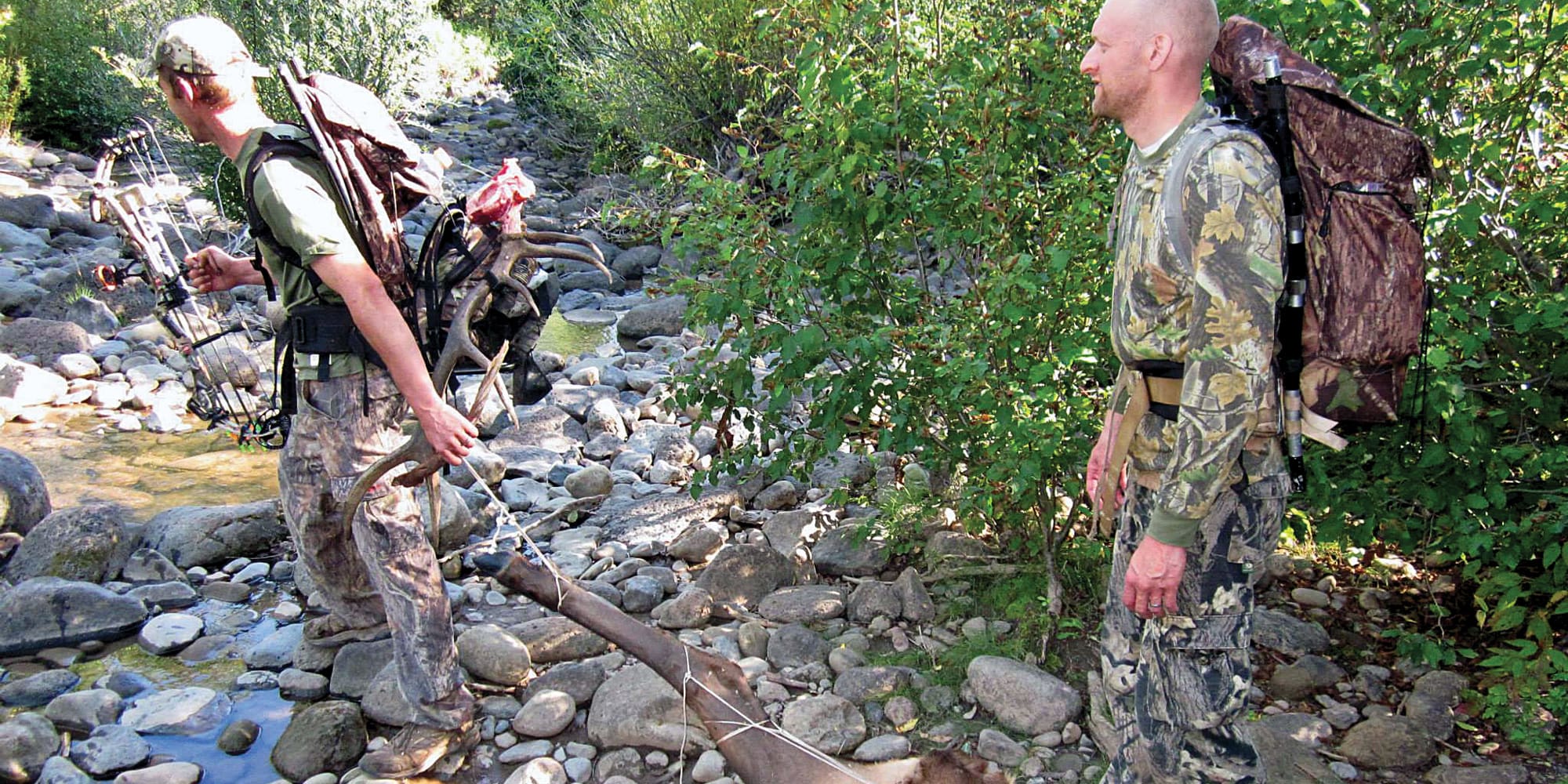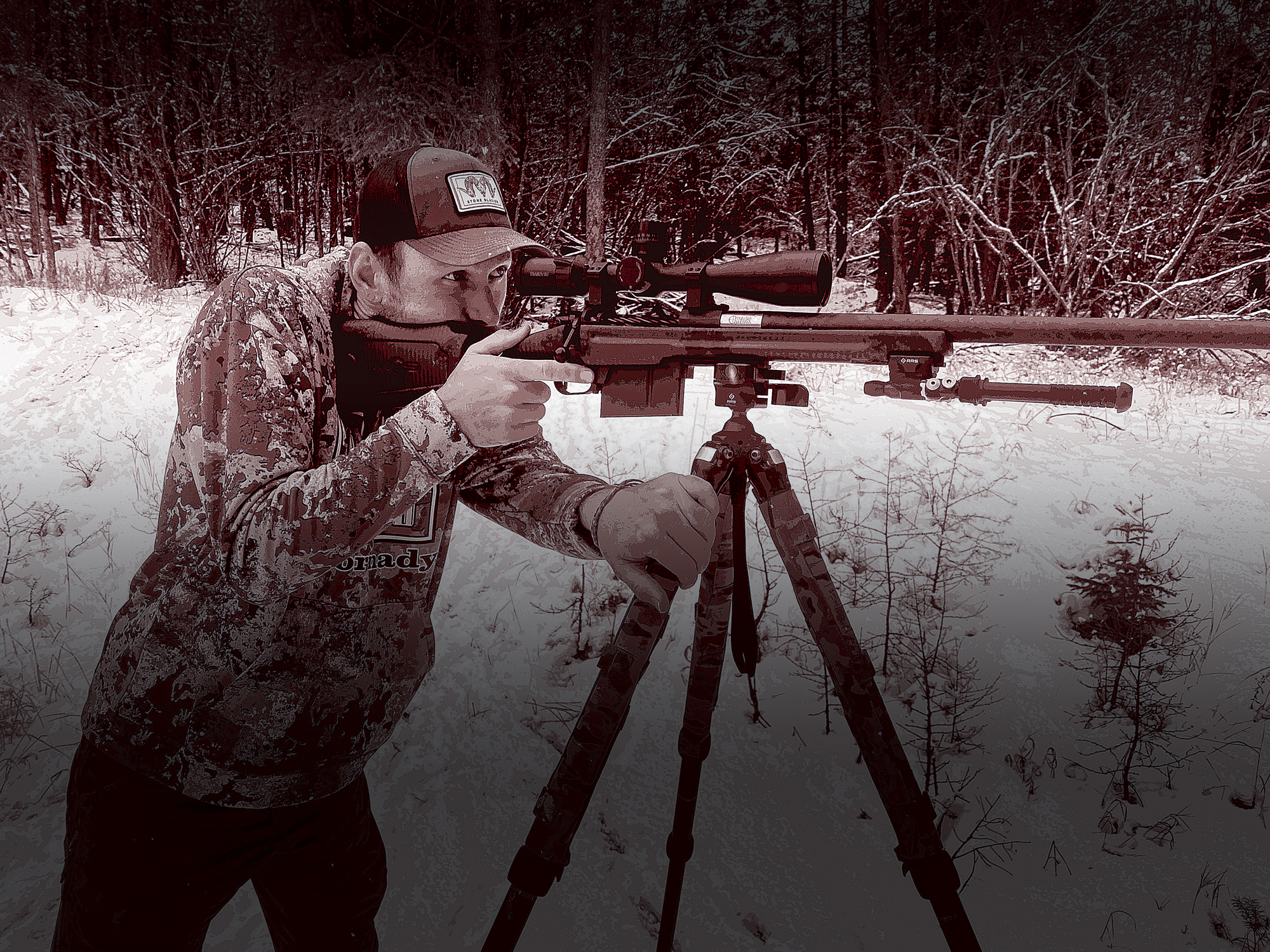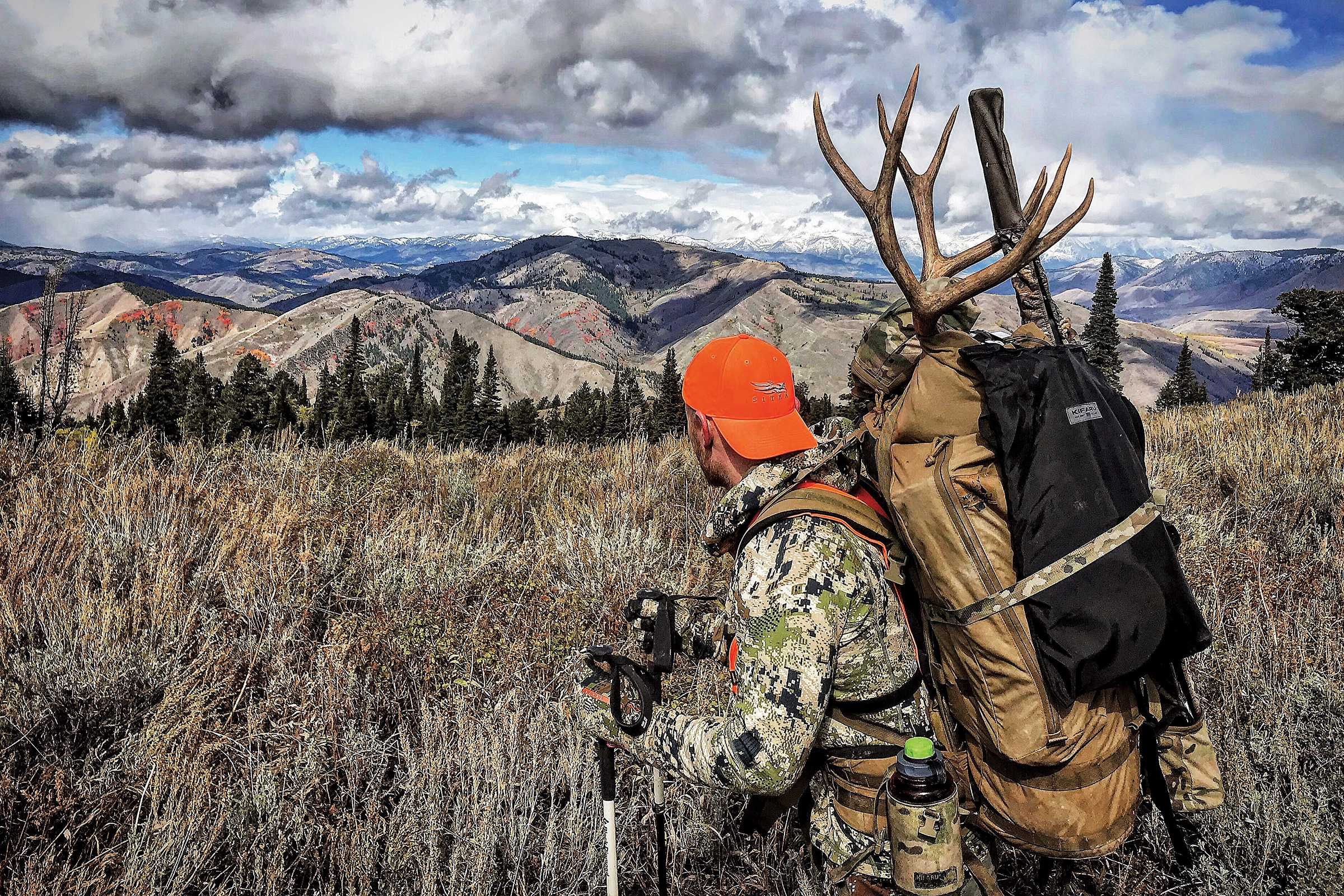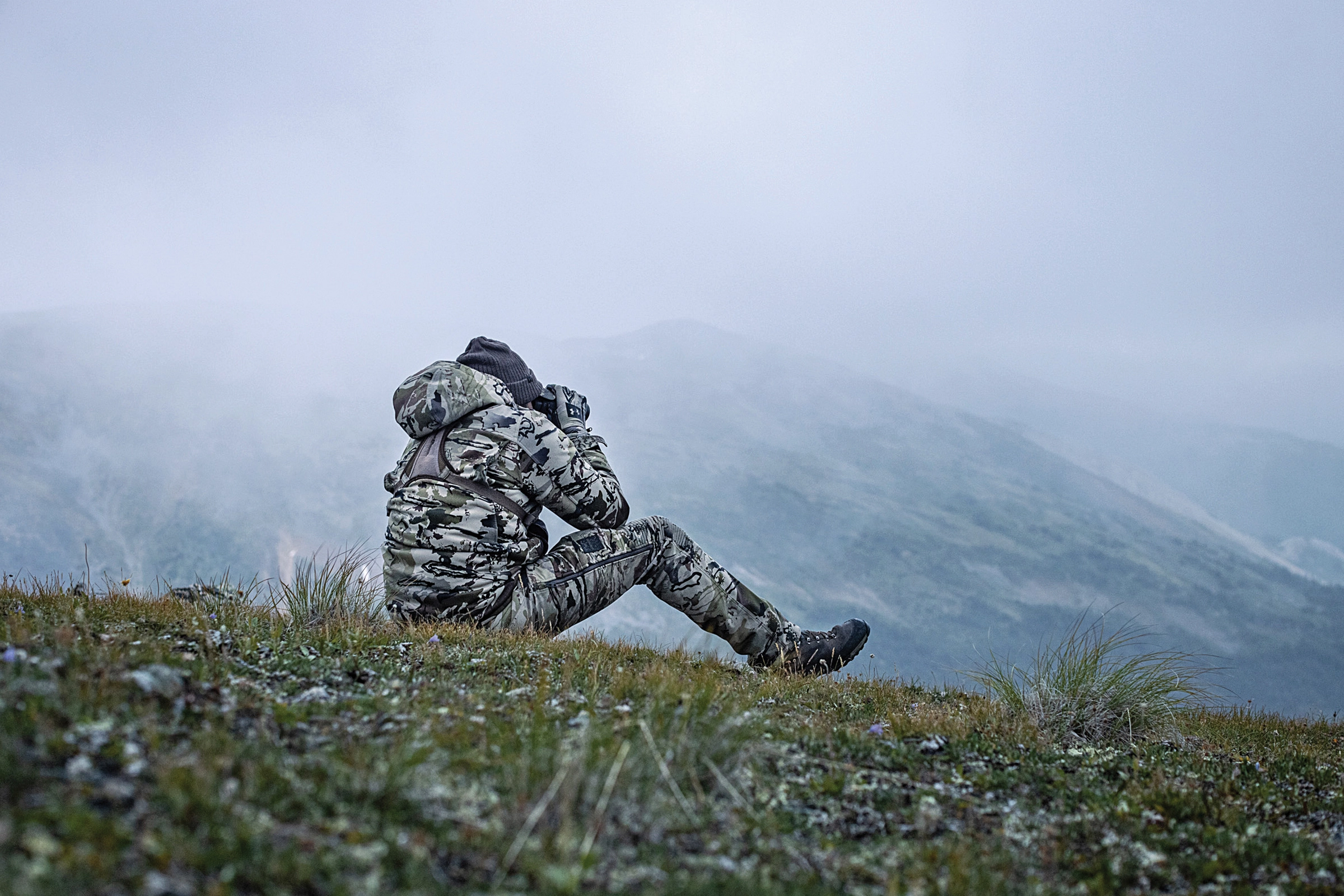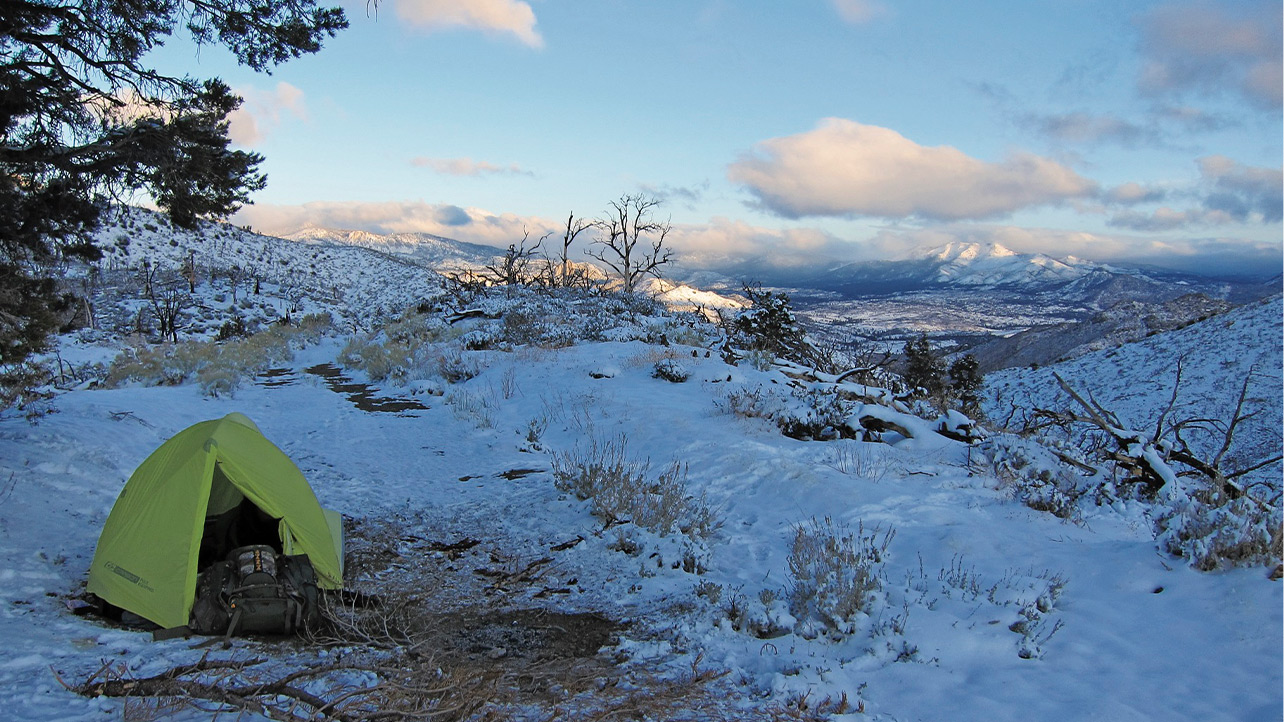
NOTICE: Certain links on this post may earn a commission for Western Hunter Magazine from Amazon or our other affiliate partners when you make a purchase. Thank you for your support.
Late-Season Backpack Hunting
Don’t let the snow keep you down…or out.
One of the things I really enjoy about being a bowhunter is all of the beautiful weather we get to enjoy while hunting the early archery seasons. Mid-August through mid-September can be some of the most beautiful time to spend up in the mountains. You’ll often catch the end of the wildflower season, cool mornings with warm daytime temperatures, the aspens are in full leaf and their shimmering leaves sounding like rain drumming softly on an old tin roof. Yeah, I’d say bowhunters have it pretty good.
But sometimes it’s fun to ratchet up the adventure level a bit and extend your season later into fall. Leaves have dropped, there’s snow on the ground, and the temperatures have plummeted. The elk have quit bugling and the bucks are in full rut. While conditions certainly aren’t as comfortable, with some adjustments in equipment and tactics, you can still enjoy a fun and successful hunt.
Outerwear
In response to the colder weather, warmer clothing is the first obvious necessity. The problem with backpack hunting later into the fall versus early season is you still have to carry all of that gear in on your back. Searching for lighter, more efficient clothing will help you keep your weight down and still stay warm.
I leave my heavy, warm jacket at home and substitute it with a lightweight down jacket, down vest, and my lightweight raincoat to wear over it as a windbreaker. I also like a lightweight fleece shirt to wear beneath my down layer. Under this, I’ll double up on a couple of layers of merino wool if it gets really cold.
If I anticipate that I’ll be posting up and glassing for extended periods, I’ll bring along a pair of down pants to keep my legs comfortable. Look at both the rating of the down fill and the amount that is put in the garment. For example, 800 fill down is great, but if the manufacturer only puts in a few ounces, it isn’t going to keep you as warm as a lower grade down that has a larger volume of fill in the garment. You may find that you have to shop outside the hunting industry to get a jacket and pant that is warm enough if you’re going into frigid conditions. The warmth-to-weight ratio you’ll get from down is by far your best bet in staying warm.
Adjust your layers of clothing to prevent heat buildup and sweating. Zippers in the armpits of rain shells or fleece jackets work well to vent heat and moisture. Too much moisture in your clothes will make you cold as it evaporates.
If you stop for a long break or at the end of the day, put on your insulation layers before you cool off too much; otherwise your body will have to work harder just to warm you back up.
Beanies
I pack several beanies with me of varying weights. I have a lightweight merino for hiking in that I can pull down over my ears when it’s windy. My midweight is a fleece beanie, and the warmer is a fleece beanie with Windstopper for use when I’m glassing.
In extreme conditions, a balaclava is a smart bet - especially when you’re glassing from a ridgetop. Collectively, the headwear weighs little, but plays a vital role. Over half of your body heat can be lost through your head. One saying goes, "If your feet are cold, put on a hat."
Gloves
Like my beanies, I carry at least a couple of pairs of gloves of different thickness. A durable lightweight pair for shooting your weapon will likely be the pair you wear most of the time. I have a pair of fleece gloves with WindStopper that I love, but they’re too bulky to shoot with. Your gloves are the most likely items to get wet, so at least one pair should be waterproof. These gloves are great if you’re going to be grabbing onto vegetation that is wet or snow-covered when you’re scrambling up steep slopes. A couple of pairs of thin glove liners can be used in more mild temperatures and they dry quickly if they get wet.
Boots
Boot selection should include models constructed with insulation. If your boots have a fabric or leather outer with a waterproof liner, make sure the outer material is treated with a waterproof sealant. Saturated material that freezes will make it really hard to keep your feet warm.
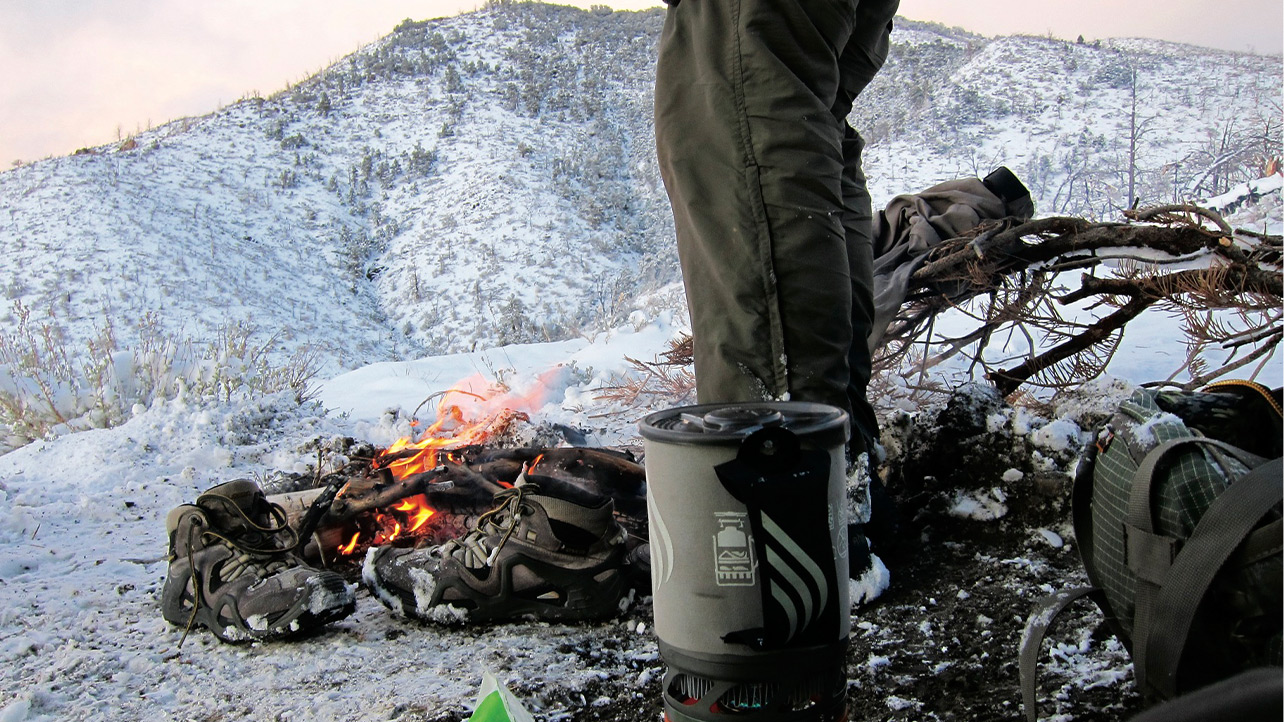
I’m a big fan of lightweight boots for hunting, so finding warm yet flexible boots can be a trying experience. I go up a half size so I can wear a thicker sock and still have room in the toe box to wiggle my toes to keep the blood circulating, but don’t wear too many pairs of socks. If the blood flow to your feet becomes constricted, your feet will get cold regardless of how many socks you have on. Tightening your bootlaces too tight will constrict the blood flow as well.
I have poor circulation in my feet and they’re the first thing to get cold when the mercury drops, particularly if I’m sitting for any length of time. To combat this, I’ve found that lightweight over-booties, designed for extended sits in treestands, work just as well for times when I’m glassing.
A waterproof gaiter will help keep your legs dry and snow out of the tops of your socks when you’re plowing through deeper snow. The extra layer also provides additional insulation for your legs.
Tip: If your foot beds get damp during the day, pull them out and dry them with your body heat in your sleeping bag at night. Bring along a large, old stuff stack or kitchen-sized garbage bag to put your boots into so you can store them inside your tent to keep them from freezing solid.
Food
- Include plenty of carbohydrates in your diet to provide fuel for hiking and for simply keeping your body warm. Snack frequently throughout the day to keep fuel available to keep your body warm.
- I like to carry my stove with me during the day to have a hot lunch. A hot chocolate or a cup of soup during a glassing set up can make it possible to stay on location much longer.
- Instead of stopping for a long lunch, snack on food all during the day at short breaks. This will keep you from cooling down too much and having to adjust your layers of clothing frequently.
- Carry a small insulated thermos-type bottle full of a hot drink or hot soup. If you get cold or just want a warming snack, you’ll already have something hot prepared.
Water
- Drink plenty of water, even if you don't think you’re thirsty. Dry winter air will dehydrate you quickly without you noticing until it’s too late. Water is necessary for your body to generate heat.
- Adding a drink mix to your water often lowers the freezing temperature. This can be particularly valuable as the mercury drops overnight.
- Use a neoprene cover for the drink tube on your hydration bag. Also, if you blow the water back out of the hose into the reservoir, it’ll take longer to freeze than in the tube.
- Keep your water bottles from freezing in your pack by putting them in a wool sock or insulated bottle cover. You can make bottle covers by taping closed-cell foam around your bottles or wrapping them in extra clothing. Store them inside the tent to slow the freezing process.
- Water filters are not suited to sub-freezing weather. Water left in the filter element can freeze and split the internal seals, destroying the effectiveness of the filter. Keep your filter in your sleeping bag if it gets really cold or use chemical tablets. Be sure to give the tablets extra time, as it takes longer to sterilize really cold water.
- When melting snow for water, put a small amount of water in the pot first to keep from "scorching" the pot before the snow starts to melt. You’re going to be burning a lot more fuel than you would on your early-season hunts with colder water temperatures and melting snow for water use.
- Use coffee filters to strain water melted from snow. Snow often contains bits of dirt, leaves, bugs, etc. that you’d rather not have in your drinking water.
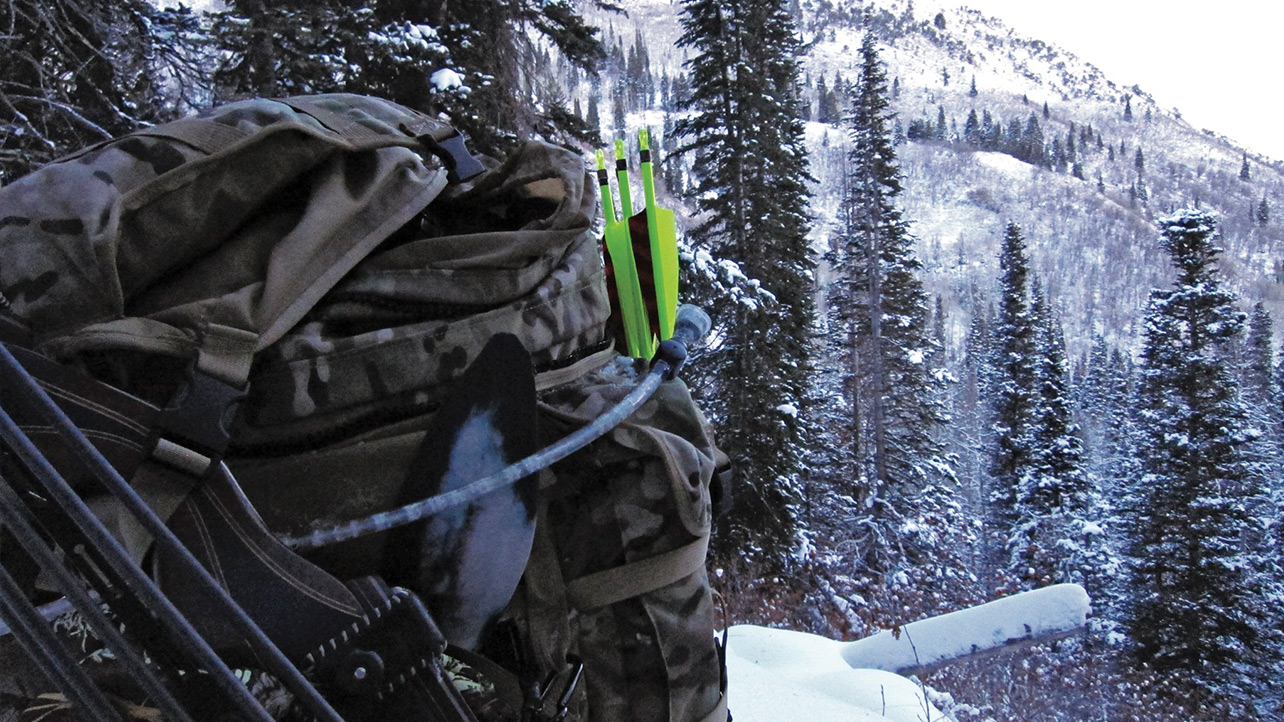
- In below-freezing weather, turn your water bottles so that the ice forms at the bottom of the bottle instead of in the opening.
- Filling your cook pot with water the night before will ensure you’ll have your coffee water if everything freezes up.
- On warmer days, I’ve had good luck laying Ziploc bags filled with snow in the sun to melt.
Gear
Tents
Three-season tents may not be sturdy enough to handle the high winds and snow buildup that sometimes accompanies winter storms. They may also be too ventilated to provide much shelter from a blowing storm. Look for a tent that has less mesh on the sidewalls and a rainfly that comes down lower to the ground. Hillberg makes great four-season tents ideal for late-season camping.
On the other hand, in milder winter weather, three-season tents can work fine for winter camping. If the weather is nasty, packing an extra tarp that can be strung up to provide a sheltered cooking area can make the experience a lot more pleasant.
Select a tent site that is sheltered from the wind if possible. I prefer camping in the timber. Hanging a tarp between trees can help block the wind from your tent if needed.
Tip: Open the vents on your tent. The little extra warmth you’ll lose will be outweighed by the moisture you’ll ventilate.
Sleeping bag/pad
I have several down sleeping bags, all rated for different temperatures. My summer bag is 30°, my fall bag 15°, and my winter bag is -10°. To save money, I could have used my two early season bags together, instead of buying a winter bag. Just make sure that you aren’t compacting the insulation too much when putting one inside the other, and also make sure there is still plenty of room to move around.
While the temperature rating of your bag is important, don’t neglect your sleeping pad. Insulating yourself against the air temperature is one thing, but an insufficient sleeping pad will have the frozen ground beneath you sucking your body heat right out of you. Make sure to invest in an insulated sleeping pad.
Other night/sleeping tips
On cold nights, even in the early season, I always wear a lightweight beanie to bed. A pair of socks and my merino base layers also help boost temperatures.
You can use a sleeping bag liner to help boost your bag’s temperature rating as well. When it gets really cold, I’ll tighten up the drawcord so that only my mouth and nose are visible.
I carry a 16-oz. Nalgene bottle with me for mixing my energy drinks. On especially cold nights, I’ll fill the bottle full of hot (not boiling) water and put it in the foot of my sleeping bag. It works great for keeping your feet warm during the night. Don't forget to seal it well.
Winter nights are long. Be sure to pack something interesting to read, as well as extra batteries for your headlamp.
If you ate an early dinner, snack on something before you turn in so that your body will have the fuel to keep you warm through the night.
‘Snow Big Deal
While many guys day hunt from home or a luxurious base camp when winter starts setting in, you can still enjoy all of the benefits of a bivy camp while staying comfortable and safe, with not much more than a little extra thought and planning. There is no reason to put away your camping gear just because there is a little white stuff on the ground!


